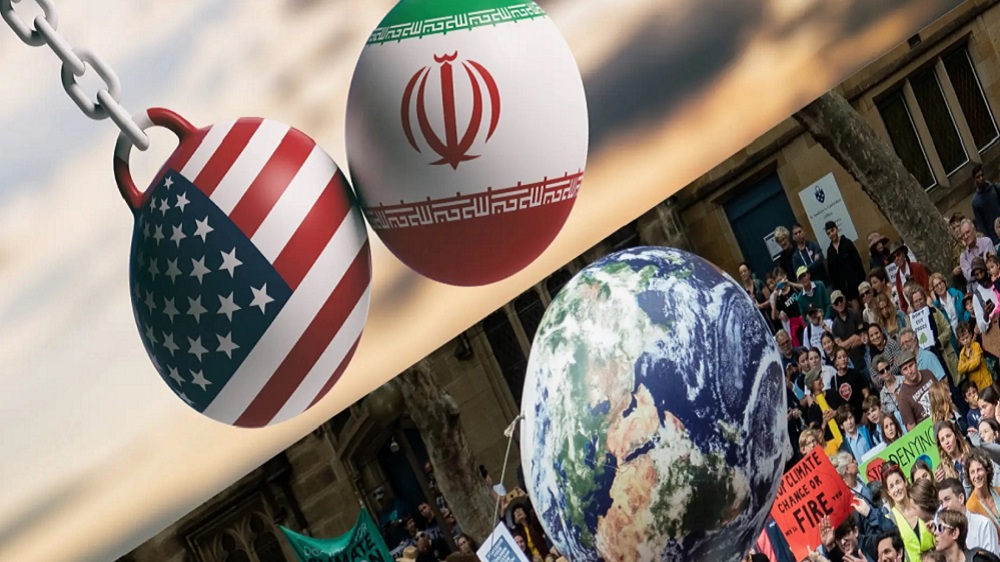
By mid-June 2020, Iran’s Foreign Minister Mohammad Javad Zarif stated U.S. president Donald Trump himself had likely reached the conclusion that his policies of “maximum pressure” against Iran had failed. He also expressed skepticism “Trump believes anymore in talk that the Islamic Republic is about to collapse; but, he keeps repeating his mistakes. It seems that they (U.S. officials) know they have committed errors but don’t know how to correct them.”(1) Since the United States’ withdrawal from the Nuclear Deal with Iran, the roots of conflict between Tehran and Washington have gone deeper with complex impact on the region. After experiencing a period of escalatory policy, the two countries have cautiously continued their current confronting polices without entering an all-out war. Trump hopes that his so called “maximum pressure” policy will force Iran to negotiate under Washington’s terms on reaching a new so-called big deal. In contrast, Iran with adopting the “maximum resistance” policy, is showing that it will not surrender to the Trump’s coercive and bullying policy.
This paper argues that the main goal of Trump’s maximum pressure policy is to diminish Iran’s strength from inside, subsequently weakening its deterrent power in the region. In response, Iran has increased its regional presence with a more dynamic policy, defining a broader zone of security in four fronts including in Lebanon, Syria, Iraq, and Yemen to add to its strategic depth with the least costs to tackle the U.S. and its regional allies’ security threats. The author also concludes that the issue of Iran-U.S. relations should not be deducted to only reaching a new nuclear deal, rather the mutual sense of strategic insecurity in the region is the main shaper of the two countries’ future relations.
During May 2010, Iran sent a flotilla of five oil tankers crossed the Atlantic Ocean with Iranian national flag, supplying about 1.53 million barrels of gasoline and alkylate to Venezuela, which is suffering from a severe gasoline shortage under U.S. sanctions.(2) The main goal of this action, beyond helping a friendly state in the crisis time, was to defy the U.S. sanctions policy, as well as testing the Donald Trump administration’s ability to encounter with Iran in hard time. Concurrently, Iranian President Hassan Rouhani warned of retaliatory measures against the United States in the region, if Washington caused problems for the tankers.(3) Iranian oil tankers reached the Venezuelan shores, delivered their cargos, and returned home safely.
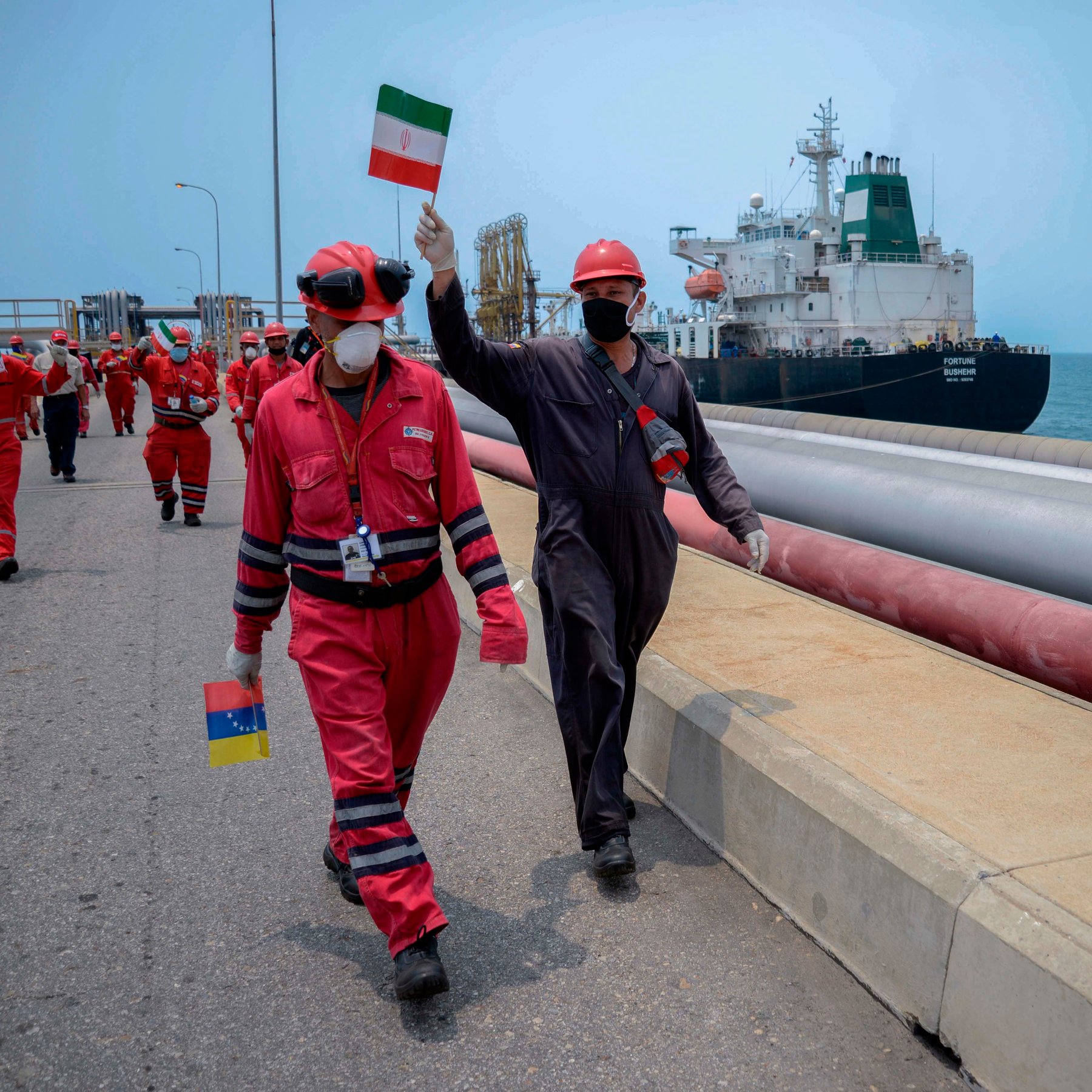
Indeed, after experiencing a period of escalatory situation, especially after the assassination of the commander of Iranian IRGC Quds Force General Qassem Soleimani and consequently Iran’s missile attacks to the U.S. Ayn al Asad airbase in Iraq, the two countries have cautiously continued their current confronting polices without any tendency to entering an all-out war. Trump hopes that his so called “maximum pressure” policy will force Iran to negotiate with Washington’s terms on reaching a new [Big] deal, as trump call it.(4) This notion of hope has strengthened after the November 2019 turmoil in Iran over a rise in petrol prices,(5) as well as the spread of COVID-19 virus and Washington’s celebration on that Iran will possibly fail managing its economic crisis during the coronavirus era, leading subsequently to the collapse of the state from inside.(6)
Responding with a “maximum resistance” policy, Iran is concurrently striving to show that it will not surrender to the Trump’s coercive and bullying policy. Ironically, the critical spread of COVID-19, as well as the current vast anti-racism protests in the U.S. after the death of George Floyd, an African-American man who was killed as a result of police violence in Minneapolis on May 25, 2020, and Trump’s mismanagement of the crisis, has brought about some hopes in Iran that Trump will fail to be re-elected as U.S. president.(7) Zarif notices Trump’s chances “have seriously decreased compared to four to five months ago.” Consequently and under the ongoing political pressures from domestic politics, he would desire to reach a deal with Iran, out of his previous terms. In parallel, an easy prisoners’ swap is in process these days between the two countries and Iran announced that it is ready to continue such actions in the future.(8) What is plain now is that the two sides are willing to avoid an unwanted war and increased tensions. In such circumstances, “time” is becoming a determinative factor in shaping the two country’s future relations.
Trump’s “Maximum Pressure” Policy: Principles and Aims
The U.S. strategic constraints in the region, led former U.S. President Barak Obama to redefine his nation’s policy towards Iran, based on containing Tehran’s regional strength. Originating in the U.S. traditional strategic thinking, the conventional wisdom in this country is that the best policy for preserving the U.S. geopolitical interests is to follow a “balance of power” policy, in which major regional players could check each other’s power. Yet, President Obama believed in the dynamics of the regional and global issues and that the U.S. power is not indefinite, therefore Washington needs increased cooperation with other states to manage global and regional affairs, relying on “balance of interests.” Understanding the significance of Iran’s regional role, President Obama tried to contain Iran’s power through its participation in the regional issues. In this respect, he announced that Iran and Saudi Arabia should converge their interests in the region.(9)
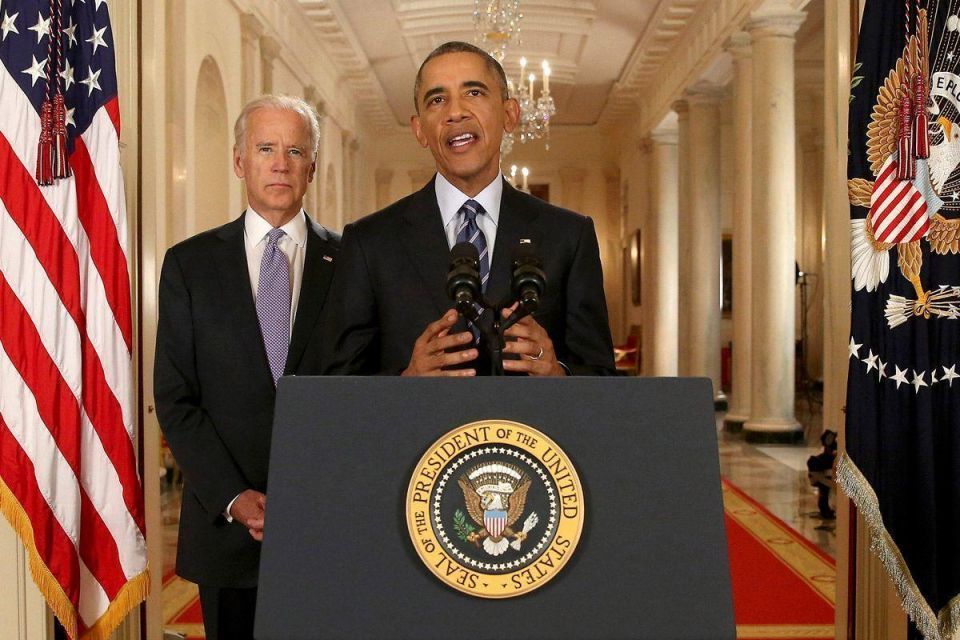
But, this line of thinking was only a short historical moment in the Iran-U.S. relations. Shortly after his election, President Trump reversed Obama’s policy legacy, including withdrawing from the Nuclear Deal with Iran, known also as the JCPOA. Trump’s coercive policy towards Iran was soon welcomed and encouraged by Iran’s regional rivals such as Saudi Arabia and Israel, stressing that the nuclear deal and the U.S. direct negotiating with Iran has strengthened the country’s regional role and power, detrimental to their geopolitical interests in the region, and therefore it should be contained immediately. The Saudis massively paid by all means at their disposal and the Israelis lobbied for a return in the U.S.’ Iran policy. Indeed, in recent years, Iran’s active and pioneering role in combating terrorist forces such as ISIS and Al Qaeda, along with Iran’s nuclear deal with world powers, has unexpectedly increased Iran’s regional role and influence, worrying its regional rivals.
While pursuing the containment of Iran’s extensive regional role and limiting its missile program, President Trump adopted the so-called “maximum pressure” policy, a “zero-oil-export” endeavor, which impose coercive economic sanctions and political pressures on Iran, forcing and isolating the country to accept his terms for a new deal to include a broader range of issues, such as Iran’s regional behavior and missile program. President Trump has argued that the nuclear deal added to Iran’s regional power without any change in its regional behavior. He said that Obama’s administration handed over billions of dollars to Iran that the country used to enhance its regional allies and status.(10) He called the nuclear the worst possible deal and against the U.S. and its regional allies’ interests.(11) He has sought seizing Iran’s supposedly intervention in regional issues, such as in Iraq, Syria, and Yemen.
A careful reading of Trump’s Secretary of State’s Mike Pompeo 12 principles preconditions shows that the main goal behind Trump’s “maximum pressure” policy is to diminish Iran’s strength from inside, subsequently weakening its deterrent power through reducing its regional influence and missile capability in the regional balance of power.(12) One can note that such policy is supported and encouraged by the Saudi and Israeli elements behind the scene, who feel lost from the changing regional dynamics in favor of Iran and possible increased Iran-US relations during the Obama presidency. Although Trump and his small policy circle retreated from their initial preconditions today, they still hope that their policy will weaken Iran from inside or possibly leading to the collapse of the state,(13) ultimately forcing the country’s decision makers to directly negotiate with the U.S. under his announced terms, which yet had no meaningful results.
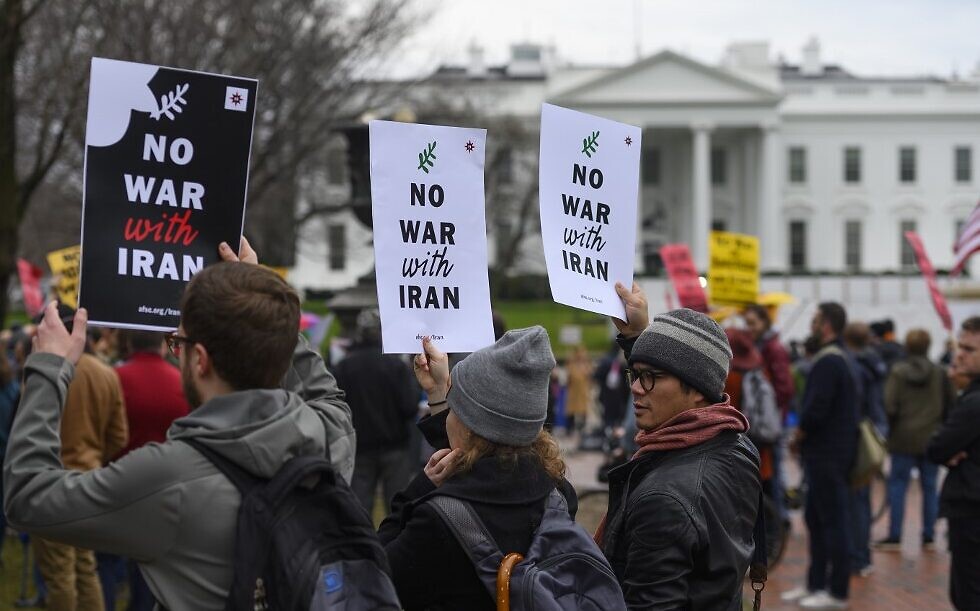
Iran’s “Maximum Resistance” Policy: Principles and Aims
Challenging Trump’s “maximum pressure” policy, Iran adopted the “maximum resistance” policy, concluding that the best strategic approach to avoid diminishing its deterrent strength is to confront Washington’s excessive and coercive expectations and demands. From the perspective of Iranian decision makers, there is a direct relation between strengthening of the country’s national security and preserving its regional status in the regional balance of power.(14)
The U.S. has several military bases in Iran’s neighborhood region and immediate borders and its overt and covert operations against Iran are concentrated from these bases. The drone which targeted Iranian commander Qasem Soleimani flew from one of these bases in the region. Concurrently, Israel (another hostile state to Iran) is benefiting from the current regional chaos, increasing its military threats against Iran’s geopolitical interests in Syria, Iraq and Lebanon. Parallel to these conventional threats, there are also the unconventional threats of anti-Iranian terrorist forces such as ISIS and Al Qaeda across Iran’s immediate borders in Iraq and Afghanistan. These threats together have led Iran to adopt a “combined” soft and hard deterrent strategy, aimed at preempting the threats in the region through filling the security power vacuums, resulted from the current wars and crises in the region. Iran has concluded that the best strategy to deal with these threats is to broaden the efficacy of its political-security role in the neighborhood region.(15)
The strategic logic of Iran’s deterrent policy is based on two constants: First, relying on massive missile fire in responding to any hostile activity. In several occasions, Iran stressed that it will target the origin of any attacks conducted from the U.S bases’ host countries.(16) In fact, President Trump’s sanctions policy had no effects on limiting Iran’s missile program, which is being considered the country’s essential source of deterrent power. In reality also, sanctions cannot stop the advancement of Iran’s missile activity, due to fact that these missiles are produced by national technology. Under sanctions and surrounded by foreign threats, Iran realized long times ago that the best defense strategy to counter foreign threats is to advance its missile program, embedding it in the country’s national economy. In addition and compared with foreign defense systems such as buying fighter jets, missiles are cheaper and more attractive, given Iran’s limited available economic resources. They are also more effective in terms of mobility and precision, and can effectively target military aims, considering Iran’s vast progress in the airspace and drowns field in the recent years.
Second, adding to its strategic depth through relying on and enhancing its relations with friendly states and allied local forces. Iran has supported its regional allies financially and militarily and benefited from its social-cultural commonalities to enhance its relations with political forces at the local and national levels. The logic of Iran’s strong support to the “resistance axis”, beyond its ideological purposes, is related to strengthening of its deterrent power through geographical attachment and possession of the fields. Commander Soleimani implemented this strategy, as a key charismatic individual with vast political clout and having inter-elite relations among all the local friendly forces. His assassination in early January 2020, was possibly under the conception that his elimination could change or at least weaken Iran’s regional status. Yet, one key fact that the deciders of that terror action couldn’t realize was that Iranian commander was only implementing Iran’s strategically oriented deterrent policy, aimed at uniting friendly forces to decrease the current degree of foreign hostile forces’ involvement in the regional issues at the expense of Iran’s geopolitical interests and national security. In fact, after the increased tensions and hostility posed on Iran by the U.S. and its regional allies, Saudi Arabia and Israel, Iran started to define a “broader security zone” for preserving its national interests, considering its dynamic role as a key factor to the survival of the state and protecting its deterrent power with the least costs.
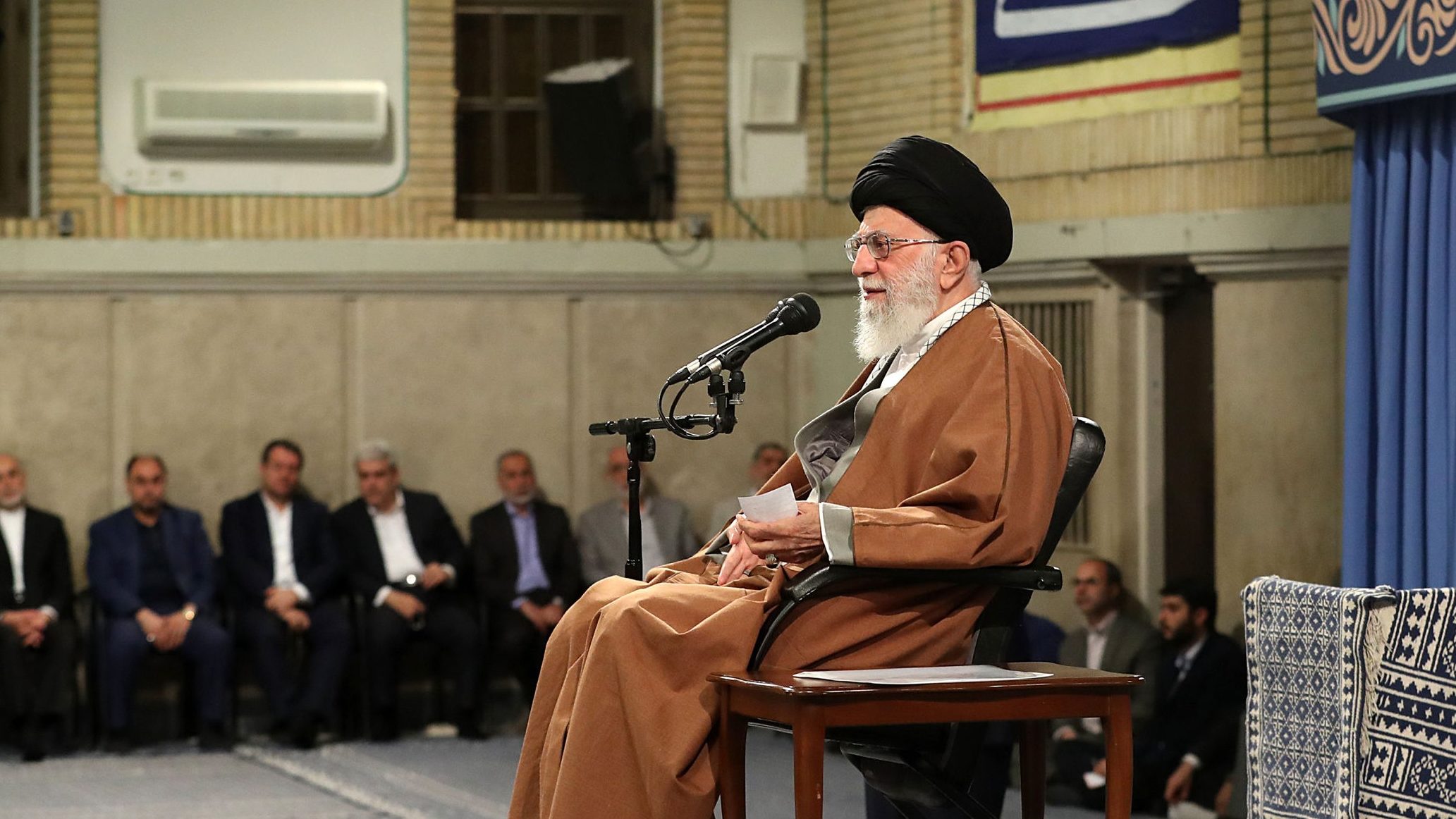
Although, this situation has led Iran’s regional and trans-regional rivals to perceive that Iran’s presence in the region is “expansionist”(17) and for increasing its “relative power”, the depiction on the Iran’s side is completely different. Iran believes that its regional presence has a deterrent logic and is merely for tackling the regional problems posing serious symmetric and asymmetric national security threats to the state, and therefore is necessary for increasing the country’s “relative security.” The legitimacy of this policy is accepted by domestic politics and the public, otherwise such policy could not continue for such a long time. So far as the immediate threats exist in the neighborhood, Iran regional presence must continue. Based on this logic, Iran has strengthened its regional position in four fronts:
The first and traditional front relates to Hezbollah in Lebanon. The significance of the deterrent role of Hezbollah for Iran has become more significant in the Syrian crisis in which this political-security force, as a main part of the resistance coalition, played a vital role to suppress Al Qaeda oriented groups such as Al Nusra and Tahrir al-Sham, and in some cases ISIS, helping consolidate the position of the Syrian government in the country’s western front battle, especially close to Lebanese borders. Hezbollah has also been a key factor to deter the Israeli conventional threats to Iran in the context of a “balance of terror.” Hassan Nasrollah in several occasions stressed that posing any threats to Iran by Israel will be faced by Hezbollah’s severe retaliatory reaction.(18) As some Israeli sources claim, Hezbollah possess some 130/000 missiles and rockets, some of which are precision-guided missiles with less than 10 meters calculating error, capable of targeting the Israeli cities and infra-structures.(19)
The second front relates to Syria and Iran’s advisory presence in the country. Iran’s aims to battle the terrorist groups and supporting its allied government in Damascus, mainly for the above-mentioned deterrent strategy. The US’ main regional ally Israel considers Iran’s presence in Syria and close to its “defensible borders” in the Golan Height as a national security threat, announcing several times that it will not tolerate such a presence in the southern borders of Syria. In this regard, the Israeli regime has occasionally targeted Iranian positions in Syria, which is more being perceived a show off of strength by the Benjamin Netanyahu’s government for domestic reasons, rather than achieving meaningful military purposes.(20) In one occasion, Syrian forces (possibly with Iranian help) responded severely, targeting the Israeli military bases in the Height. Yet, for avoiding the creation of an unbalancing situation by a possible U.S. new involvement in the Syrian war, the Iranian military and security officials announced that Iran will respond to these attacks in the right time and right place.(21) Iran wants to show its resolve in following its deterrent and defensive aims and principles in the region.
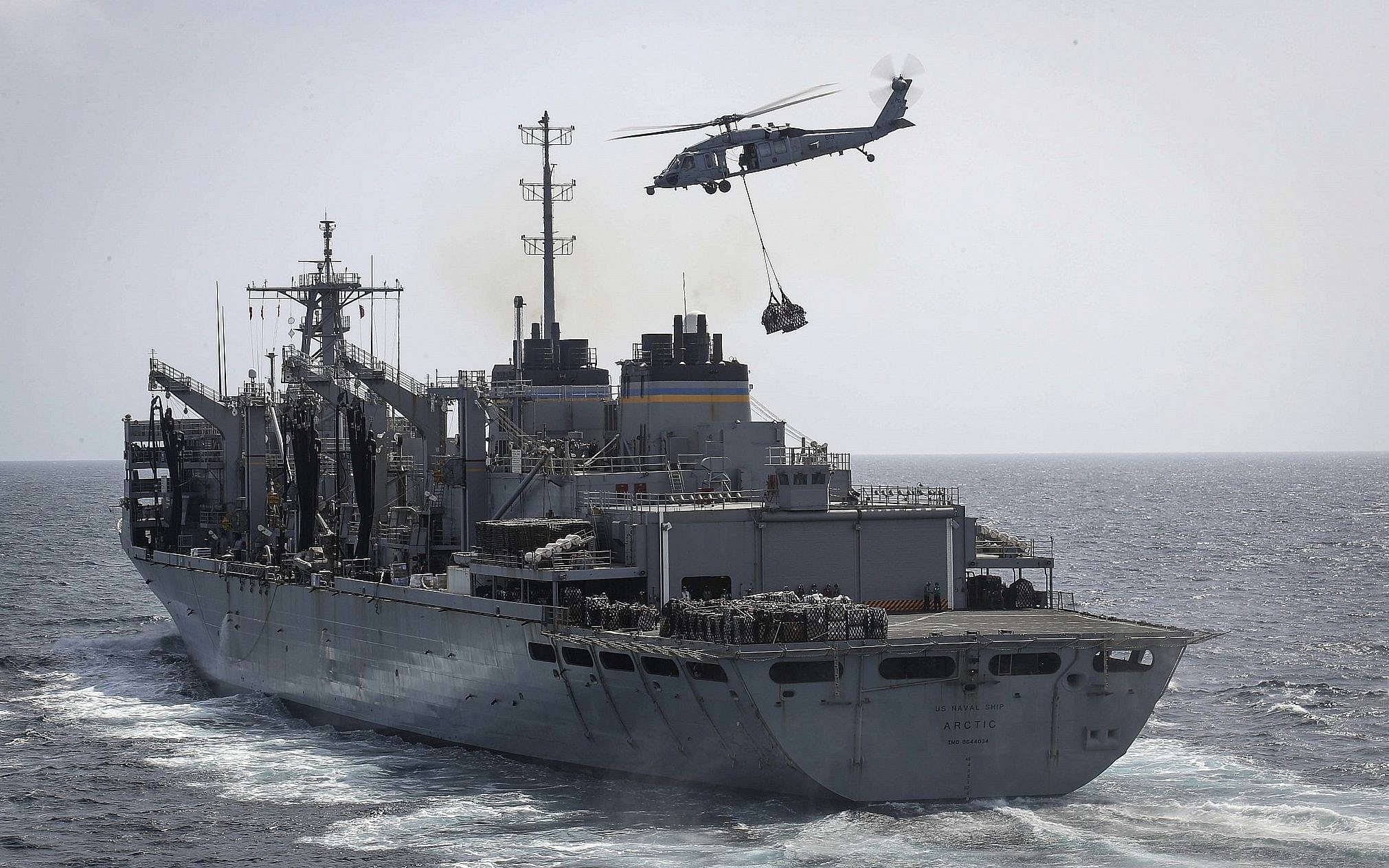
The third front relates to the Iraqi Popular Mobilization Forces (PMF), known as Al-Hashd Al-Sha’bi, established initially by Ayatollah Sistani’s Fatwa and then with the help of Iran in the crisis time of ISIS attacks in 2014. PMF’s key role in defeating ISIS has added to the political-social significance of this group in Iraq power structure, subsequently worrying the U.S. and its allies as another step towards an increased Iranian role and influence in the region. Extension of Israeli drown attacks from Syria to Iraq and targeting the PMF and its related groups’ bases lately demonstrate the fear of establishing a new front against the main U.S. ally through the Iraqi field. Some reports suggest that the PMF possesses ballistic missiles, which are capable of targeting the Israeli soil.(22)
Finally, the fourth front relates to Houthi forces in Yemen. The incapability of Saudi-Emirati coalition in defeating this movement, together with the Houthis’ field victories in recent months, especially in the al Hudaydah battle, coupled with drone and missile attacks to military bases, refineries, and airports in the Saudi and Emirati soils, as well as the Houthis announcement to target Israel(23), has opened a new front against the U.S. allies in the region. So far the Houthis fired missile with more than 1200 kilometers range to some areas inside Saudi Arabia and the Emirates. Some Western and Arabic sources believe that Iran has transferred the necessary technology of building these missiles and drones to Yemen, adding to its strategic depth in the regional balance of power.(24)
Therefore, Trump’s maximum pressure policy to diminishing Iran’s deterrent power has not only resulted in further complexity in the regional issues, but leading Iran to enhance its deterrent principles in a broader regional security zone. Unlike, the Trump administration’s expectations, the U.S. withdrawal from the JCPOA, has not forced Iran to retreat from its regional positions and especially limiting its missile program. On the contrary, this policy has increased Iran’s sense of strategic insecurity towards the U.S. regional aims and intentions determining Iran to rely on its defensive deterrent policy through an active regional presence and advancing its missile and drone programs.
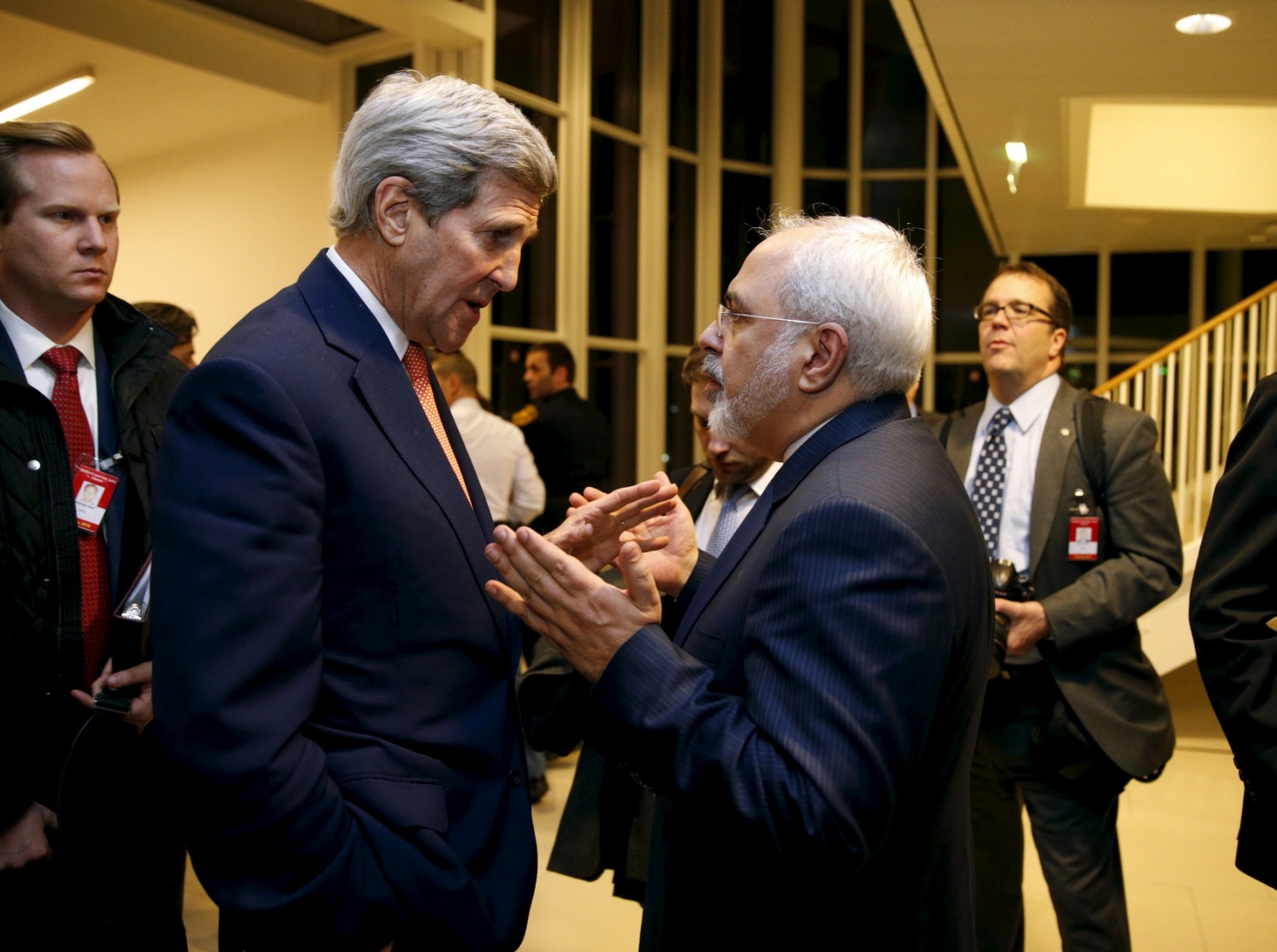
Minimum Containment Policy and Avoiding an Unwanted War
As the dice of the “maximum pressure” and “maximum resistance” policies are rotating between Iran and the United States, a new syntheses policy, which seems satisfactory for both parties, is emerging and that is appealing to a “minimum containment” policy, based on avoiding an unwanted war and diminishing tensions in the short-term. In this situation, the factor of “time” becomes the main shaper of the two sides’ future relations. Trump has a presidential campaign in November 2020 and extensively seeks to avoid any escalatory policy that could end up to an all-out war in the region, which would be detrimental to his chances of being reelected, especially in the time of COVID-19 spread and anti-racism protests in America and his current mismanagement of handling these crises. In contrast, despite all the current economic hardships, Iran was able to cope with Trump’s “zero-export-oil” economic war against the country and guaranteeing the survival of the state. As a result, there is no immediate sign of Iran’s collapse from inside in the way that Trump and his regional allies expected.
In such a circumstance and given the U.S. strategic constraints in managing the previous wars in Afghanistan and Iraq, especially the post-conflict situations in these countries, the notion of entering another direct military conflict in the region is being almost put aside by Trump’s administration. As a result, Trump is gradually centering its approach on a “minimum containment” policy to minimize the costs of containing Iran’s regional role and power. In contrast, Iran has resorted to the approach of “no war, no negotiation” perceiving it necessary to preserve the country’s strategic interests,(25) chief among them is to keep its deterrent strength. By unifying Iran’s foreign policy approach, as well as convincing the country’s political factions that it is futile to negotiate with the U.S. in a time of political inequality, Iran wants to show that its indomitability or resistance against Trump’s and his favorite regional allies’ so-called “maximum pressure” policy.
The “no war, no negotiation” policy shows Iran is prepared to face a possible conflict with the U.S. under any circumstances. Iran believes that it has the capability to defend itself against the U.S. through both symmetric and asymmetric means, via its conventional military means and through its friendly forces in the Middle East that can, if necessary, endanger U.S. interests. By connecting the issue of U.S. economic sanctions to the more significant issue of national security and the broader threat of instability and even the possible collapse of the “state,” Iranian decision makers have been able to enhance the logic of “maximum resistance” in Iranian politics. This is made easier because, from the Iranian perspective, blame for the new wave of hostility between Iran and the U.S. lies with the Trump administration and its withdrawal from the internationally-recognized 2015 nuclear deal (JCPOA) in order to act against Iran’s interests.
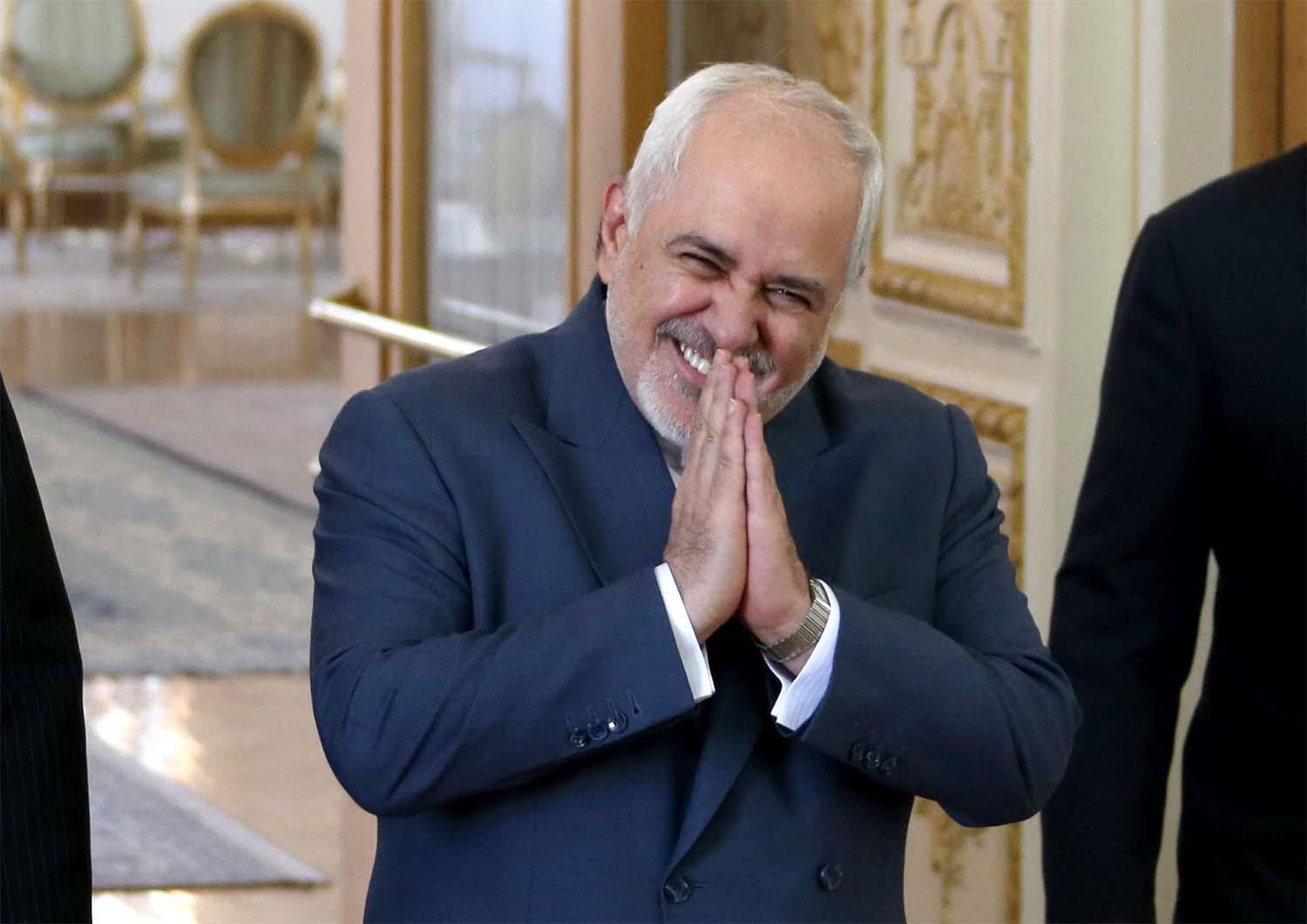
By the time of writing this article and in his latest tweet about Iran after a swift prisoner swap, President Trump says, “Thank you Iran. [but] Do not wait until after U.S. election to make the Big Deal. I am going to win. You will make a better deal now.”(26) This statement shows how simplistic is the U.S. president to deduct the issue of relations or talks with Iran to merely the issue of the nuclear deal, while on the Iran’s side, the issue is being considered beyond the nuclear deal, relating to a strategic distrust to the U.S. aims and intentions in the region. Iran believes that the U.S. main goal is diminish the sources of power of the “state” of Iran. For decades, indeed, the focus of U.S. Middle East policy has been to contain Iran’s emerging regional strength. Iran believes that both its geography and historical-religious commonalities with its neighbors will define Iran’s regional status. These factors necessitate that Iran actively integrate with the region’s political-security and economic trends, mainly for the sake of preserving its national security and economic prosperity.
Undoubtedly there is always the possibility of talks between Iran and the United States. But given the current mutual sense of strategic distrust, such an encounter would not achieve any meaningful results at present. Meaningful negotiations between Iran and the U.S. will only occur when the two sides manage to withdraw from the current situation and when concurrently the idea of such negotiations is supported amid the two countries’ domestic politics, especially on Iran’s side, which is always concerned of losing the ground to its arch rival. Only by strengthening its regional position and security situation will Iran be able to return eventually to the idea of comprehensive talks with the U.S. The JCPOA was negotiated under similar conditions. In abrogating U.S. obligations under the JCPOA, President Trump has also lost Iran’s public, who sincerely at one time wanted their government to interact with the U.S. and resolve the existing strategic discrepancies in the U.S.-Iran relationship. Therefore, President Trump’s efforts to weaken Iran first and then initiate negotiation with the country are doomed and will only perpetuate previous, failed U.S. policy toward Iran
Finally, Iran’s has two main regional goals: First, strengthening its deterrent power, in order to preempt security threats from within the region and beyond. Second, diversifying and strategizing its economic structure, relying on the sources of its national power. One significant way to achieve these aims is to value the dynamic of regional integration and good neighborhood relations. President Trump’s “maximum pressure” policy is trying to block Iran’s path to achieving these aims. Iran favors to diminish the possibility of a conflict with the United States through strengthening the scale of Iran’s national power in this time of crisis. Iran’s assertive reactions to perceived security and economic threats are aimed at preempting broader threats for the survival of the “state” of Iran. This issue is the main reason behind the country’s “maximum resistance” policy.
(1) Reuters, “Iran's Zarif sees Trump favourite to win U.S. election”, June 13, 2020 https://www.reuters.com/article/us-usa-election-trump-iran/irans-zarif-…;
(2) “Flotilla of Iran fuel for gas-starved Venezuela arrives Sunday,” Al Jazeera.com, 23 May 2020, https://www.aljazeera.com/ajimpact/flotilla-iran-fuel-gas-starved-venez…
(3) “Rouhani says Iran to retaliate over any U.S. 'trouble' for Venezuela-bound tankers,” Reuters, 23 May 2020, https://www.reuters.com/article/venezuela-fuel-rouhani/rouhani-says-ira…
(4) David E. Sanger, Farnaz Fassihi and Rick Gladstone, “Urging Iran to ‘Make the Big Deal,’ Trump Ties Nuclear Negotiations to Election,” The New York Times, June 5, 2020, https://www.nytimes.com/2020/06/05/world/middleeast/trump-iran-nuclear…
(5) Najmeh Bozorgmehr, Iran’s fuel price crisis shows economy strangled under US sanctions,” The Financial Time, November 19, 2019, https://www.ft.com/content/4d0fefa2-0a1b-11ea-bb52-34c8d9dc6d84
(6) “Sanctions on Iran have produced ‘excellent results’ says Brian Hook,” Arab News, June 9, 2020 https://www.arabnews.com/node/1687166/middle-east
(7) Ben White, “Trump faces the risk of a coronavirus cliff,” Politico, May 28, 2020, https://www.politico.com/news/2020/04/28/trump-reopening-coronavirus-21…
(8) “More prisoners likely to be exchanged between Iran, US: Mousavi,” Mehr News Agency, June 11, 2020, https://en.mehrnews.com/news/159685/More-prisoners-likely-to-be-exchang…
(9) Jeffrey Goldberg, “The Obama Doctrine,” The Atlantic, April 2016 Issue. https://www.theatlantic.com/magazine/archive/2016/04/the-obama-doctrine…
(10) Douglas Mackinnon, “Obama should apologize for shameful cash payment to Iran,” The Hill, January 11, 2020 https://thehill.com/opinion/white-house/477666-obama-should-apologize-f…
(11) “Trump on the Iran deal: worst, horrible, laughable,” BBC.News, 26 April 2018, https://www.bbc.com/news/av/world-us-canada-41587428/trump-on-the-iran-…
(12) “Mike Pompeo speech: What are the 12 demands given to Iran?,” Al Jazeera.com, 21 May 2018, https://www.aljazeera.com/news/2018/05/mike-pompeo-speech-12-demands-ir…
(13) “Sanctions on Iran have produced ‘excellent results’ says Brian Hook,” Arab News.
(14) Admiral Ali Shamkhani, “Security of Syria is equivalent with security of Iran,” Iran Online, June 2, 2018 http://www.ion.ir/News/366810.html
(15) Ebrahim Mottaghi, “Analyzing Iran’s Forty-Year Islamic Revolution,” Mashraegh News, January 15, 2019 https://www.mashreghnews.ir/tag
(16) Nick Paton Walsh, “Exclusive: Zarif threatens 'all-out war' in case of military strike on Iran,” CNN.Com, September 20, 2019 https://edition.cnn.com/2019/09/19/middleeast/iran-zarif-saudi-intl/ind…
(17) “Saudi Arabia’s Al-Jubeir: Iran should stop targeting Kingdom with missiles and militias,” Arab News, January 24, 2020 https://www.arabnews.com/node/1617696/middle-east
(18) Nicolas Blanford, “Hezbollah won’t stand down in a US-Iran conflict,” The Atlantic Council, July 2, 2019 https://www.atlanticcouncil.org/blogs/iransource/hezbollah-won-t-stand-…
(19) Yaakov Lappin, Yaakov, The Upheaval in Syria Opens the Door for Iranian Attack, November 4, 2019, Begin–Sadat Center for Strategic Studies, No. 1,335 https://besacenter.org/perspectives-papers/syria-upheaval-iran-attack/
(20) Emily Burchfield, “The influence of domestic politics on foreign policy in Syria,” The Atlantic Council, January 17, 2019 https://www.atlanticcouncil.org/blogs/syriasource/the-influence-of-dome…
(21) “Iran military chief warns: Israeli violations of Syria are ‘unacceptable’,” The Times of Israel, 18 October 2017 https://www.timesofisrael.com/iran-will-not-tolerate-israeli-violations…. See also: Tasnim News https://www.tasnimnews.com/fa/news/1397/02/17/1719917/
(22) Shaan Saikh “Iranian Missiles in Iraq,” CSIS Briefs, December 11, 2019 https://www.csis.org/analysis/iranian-missiles-iraq
(23) “Spokesman of Yemeni Arm Forces: We are Ready to Attack Israel,” October 2019, IRNA News, https://www.irna.ir/news/83563203
(24) Yara Bayoumy, Phil Stewart, “Exclusive: Iran steps up weapons supply to Yemen's Houthis via Oman – officials,” Reuters, October 20, 2016 https://www.reuters.com/article/us-yemen-security-iran/exclusive-iran-s…
(25) 24. Kayhan Barzegar, “Why Ayatollah Khamenei Has Blocked Negotiations With The U.S.,” Lobelog, September 13, 2019 https://lobelog.com/why-ayatollah-khamenei-has-blocked-negotiation-with…
(26) David E. Sanger, Farnaz Fassihi and Rick Gladstone, “Urging Iran to ‘Make the Big Deal,’ Trump Ties Nuclear Negotiations to Election,” The New York Times.